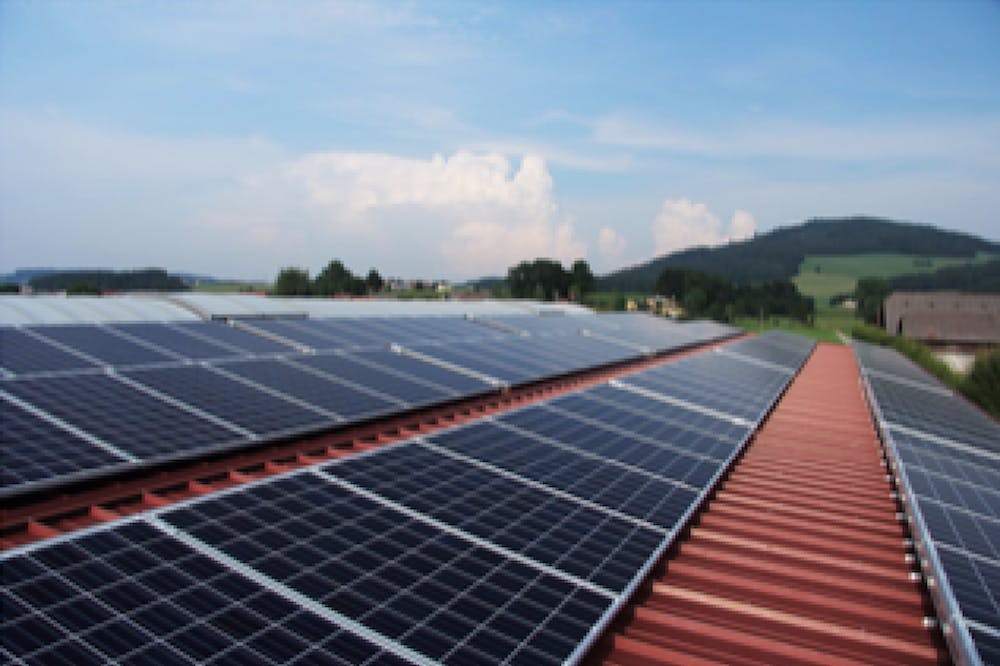By: Celine Thormann
Solar power is slowly becoming more and more popular. You might see the dark blue panels on roofs in your neighborhood or hear about how some colleges are incorporating solar power into student centers. You might even notice that your calculator has solar power in addition to its battery. However, the science can be kind of complicated, so here is some basic information about solar power and how we here at Miami are getting involved with it. What is solar power and how does it work?We happen to live relatively close to a huge, natural nuclear reactor that we call the sun. We revolve around it, it keeps us warm, and in one hour it theoretically produces enough solar energy to fuel the whole world for a year. The trick is harnessing all that energy. The solar panels that you see on roofs are made up of several layers of silicon, called solar cells, with a negative and positive layer forming an electric field. When the sun hits the panels, electrons are knocked loose. With the charged ends of the panel attached to the solar cells, the electrons are captured and moved in an electrical current just like we see in a battery. However, this is a direct current, or DC, and the U.S. electrical system is set up to run off of alternating current, or AC. Therefore, we need an inverter connected to the solar panels to change the DC to AC before the electricity reaches the building it is powering. Do solar panels still work at night?Yes. During the day, the solar panels absorb more energy than the building could ever use. All that extra energy is stored in a grid connecting several solar panels. At night, that excess energy is redistributed, and the buildings have power all the time. While it is possible for solar panels to become completely covered and lose energy (RIP Mars Opportunity Rover), that would not happen here on Earth, where even cloudy days have enough light to power solar panels. Why don’t more people have solar panels?As with many things, the answer comes down to money. While they are rapidly getting cheaper, solar panels are expensive to install. For example, in 2011, Miami University students looked into installing solar panels on then-President David Hodge’s house, but despite a $10,000 grant from an alumnus, the project was too costly to be achievable. The average cost of a solar panel a few years ago was $7-$9 per watt, with the whole installation costing between $25,000-$30,000. As of February 12th, the average price per watt was $2.85. Additionally, many utility companies offer incentives to use solar power, and as solar power becomes more popular, the market will become more competitive, and the price will go down. Some fun Miami newsMiami University has been working hard to become a more sustainable campus. You may have noticed your professors attempting to use less paper or talked with an Eco Rep in your dorm. In 2011, Miami University had a sustainability rating of a C+, but we have come so far that we made The Princeton Review Guide to 375 Green Colleges for 2017. In November, a group of Miami students and staff installed an 18 panel solar array at nearby Institute for Food Farm. This panel produces enough energy to run the farm’s irrigation system and will increase efficiency as well as save the farm around $1,000 per year. This was an exciting opportunity for students, particularly engineering students, and is just one of the many ways that Miami is proving its commitment to the environment. More information about sustainability at Miami University can be found here or you can talk to your dorm Eco Rep!Photo via Pixabay

